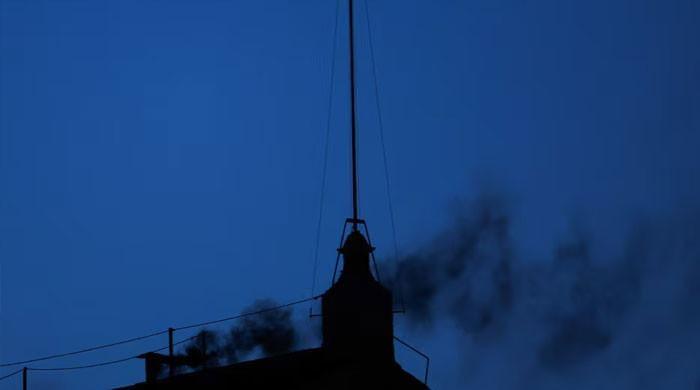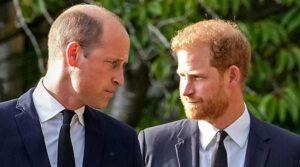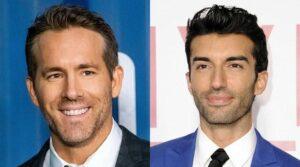- The cardinals took an oath of secret before the start of the conclave.
- The vote takes place in the Sistine Chapel, cut off from the world.
- Progressives and traditionalists compete for supremacy.
On Wednesday evening, black smoke died from the sixtine chapel chimney, signaling a first unclosed vote by the cardinals locked in the sixtine chapel in a conclave to elect a new pope to guide the Roman Catholic church.
Thousands of faithful gathered on the square of Saint-Pierre while waiting for smoke to pour out from a narrow eyeshadow on the roof of the chapel at the end of a day rich in rituals and enchetrie, with prelates praying for divine direction in their secret ballot.
The crowd had to be patient because it took more time than expected for smoke to appear, more than three hours after the start of the conclave. It was an hour more that smoke was needed to be seen after the first vote of the 2013 conclave which chose the late Pope Francis.
When a pope is chosen, white smoke will emerge, but it had not been expected on Wednesday – a pontiff was not chosen on the first day of a conclave in modern times.
However, some cardinals said this week that they hoped to conclude things on Thursday or Friday to show that the church could remain unified after the often conflictual papacy of Francis, who died last month.
The 133 cardinal voters, all under the age of 80, will spend the isolated night in one of the two Vatican guest houses – where they can continue their deliberations in a more informal setting before returning to the chapel on Thursday morning.
After Wednesday’s single voting, the “princes of the church” with red heat will hold two votes in the morning session and two in the afternoon, continuing in the coming days until a man has obtained a majority of two thirds-89 cardinals this time.
Their only communication with the outside world will be the smoke of the chimney as they burn their finished voting bulletins mixed with special chemicals – black when a voting session ends without result, white when a pontiff is elected.
Modern papal conclaves are generally short. The 2013 conclave only lasted two days, as in 2005, when its predecessor, Benedict XVI, was chosen.
In recent days, the cardinals have offered different assessments of what they are looking for in the next pontiff who will direct the church of 1.4 billion members.
While some have called for continuity with Francis’s vision of a greater openness and reform, others said they wanted to go up the clock and embrace old traditions. Many have indicated that they wanted a more predictable and measured pontificate.
‘Bon from the church’
In a sermon before the conclave, the Italian cardinal Giovanni Battista Re, who, at 91, is too old to participate in the vote, told his prelate colleagues that they had to put aside “all personal considerations” in the choice of the new pontiff and keep in mind “only … the good of the church and humanity”.
He also suggested that the next Pope should respect diversity within the church. “Unity does not mean uniformity, but a firm and deep communion in diversity,” he said.
No clear favorite has appeared, although the Italian cardinal Pietro Paroline and the Cardinal Philippin Luis Antonio Tagle are considered the favorites.
However, if it quickly becomes obvious that neither can win, votes are likely to move to other contenders, voters perhaps merging around geography, doctrinal affinity or common languages.
Among the other potential candidates appear the comeders of Jean-Marc France, Peter Erdo de la Hungary, the Robert Prévost and Pierbattista American Pizzaballa.
A record of 133 cardinals from 70 countries entered the Sistine Chapel, against 115 compared to 48 nations in the last conclave in 2013 – growth that reflects Francis’ efforts during his reign of 12 years to extend the geographic scope of the Church.
Among their considerations, there will be whether they should look for a pope in the world of world, where congregations are developing, as they did in 2013 with Francis, Argentina, or put the reins in Europe, or even choose a first American pope.
The Latin songs and organ music accompanied the cardinals as they transformed themselves into the chapel of Sistine des Fresques before the start of the conclave, with the representation of Christ by Michelangelo, delivering the last judgment of the 500 years.
They got their hands on the Gospels, making a secret wish to not disclose anything on their gathering.
Archbishop Diego Ravelli, the Master of Vatican ceremonies, then pronounced the Latin command “Extra Omnes!” (Everyone!) Tell those who are not involved in the rally to leave the room, the heavy wooden doors of the chapel slamming the outside world.
There is no discussion in voting sessions, but experience suggests that there will be many secret campaigns during breaks and meals such as “papabilis” names get up and fall into successive ballots.




